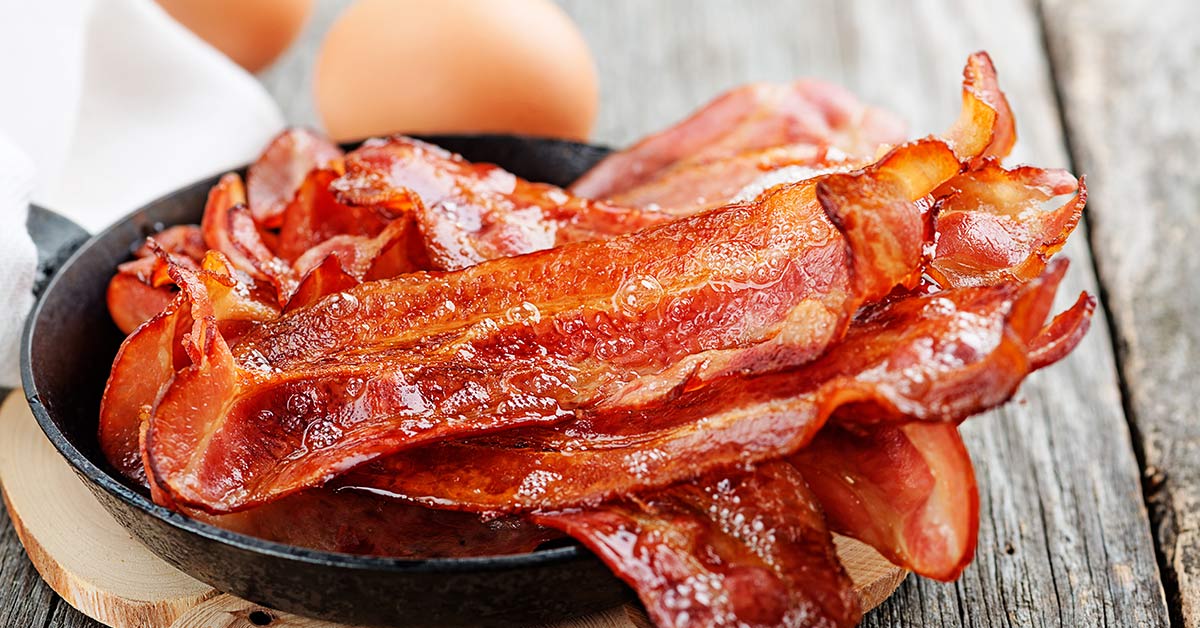Bacon and eggs are a classic American breakfast. For Californians, however, this staple might become harder to get in the coming months. This is because beginning in 2022, the state will be enforcing a bill that requires more space for breeding pigs. Though good for the animals, the pork producers – and therefore consumers – are the ones who will end up feeling the pinch. (1)
A Potential California Bacon Shortage On The Horizon
If the words “bacon shortage” are a nightmare for you, wake up – you aren’t actually dreaming. This could become a real problem for people living in California in the next few years. A part of a law the state passed in 2018 that requires more space for breeding pigs will come into effect in the new year. This law requires 24 square feet per hog – enough space for them to stretch their legs and turn around. (2)
This, of course, is great news for pigs. It also shows just how low the standards really are for the quality of life of animals being raised for food. Despite the clear animal rights improvements, the pork industry is still fighting back against the regulation changes.
“Why are pork producers constantly trying to overturn laws relating to cruelty to animals?” farm animal protection efforts lead at the Humane Society of the United States Josh Balk asked. “It says something about the pork industry when it seems its business operandi is to lose at the ballot when they try to defend the practices and then when animal cruelty laws are passed, to try to overturn them.”
It Won’t Just Affect California Producers
A coalition of various animal rights groups pushed for a bill like this for many years. Finally, the public voted in favor of it in 2018. The bill isn’t just for pigs, either. (3) Other aspects of the 2018 California state bill include:
- Veal comes from calves who have more than 43 square feet of space beginning in 2020
- Hens (includes all fowl) have at least one square foot per bird
- All eggs sold need to come from “cage-free” hens beginning in 2022
Though this is a California law, it will affect more than just California producers. California restaurants and grocery stores currently use about 255 million pounds of pork products each month. The state itself, however, only produces about 45 million pounds. This means that the majority of pork products in California come from out of state, most prominently Iowa.
The 2018 bill does not just require California producers to change their methods. This is because it requires that all pork products sold meet these new standards, regardless of where that meat was actually produced. The changes farmers will have to make to their product will cost them a lot of money, but in the same vein, farmers in other states also can’t afford to just boycott or ignore the California market. The cost of changes, especially for farmers who have recently invested in their current systems, could put many producers out of business.
A Price Increase
It’s not just the cost for the producers that will go up. The cost of bacon for restaurants and the general consumer population will, as well. This means price hikes at grocery stores and on your favorite restaurant dishes.
The cost is estimated at about a 15% price increase per pig. This, combined with the cost of updating facilities, could put many producers out of business, especially those based in California. If the state lost half of its producers, consumers and restaurant owners can expect to see about a 60% increase in bacon prices from around $6 per package to nearly $10. As always, those affected most will be low-income and minority populations.
“You know, I work and live with a lot of Asian and Hispanic populations in the city and their diet consists of pork. Pork is huge,” said San Francisco restaurant owner Jeannie Kim. “It’s almost like bread and butter.”
Of course, the rights and welfare of farm animals are still important. So the question is – how do we balance the needs of producers and consumers while improving the lives of our farm animals? Time will tell.
Sources
- “Bacon may disappear in California as pig rules take effect.” AP News. Scott McFetridge. July 31, 2021.
- “‘A loud and clear message’: California passes historic farm animal protections.” The Guardian. Gabrielle Canon. November 8, 2018.
- “California Proposition 12, Farm Animal Confinement Initiative (2018).” Ballot Pedia

